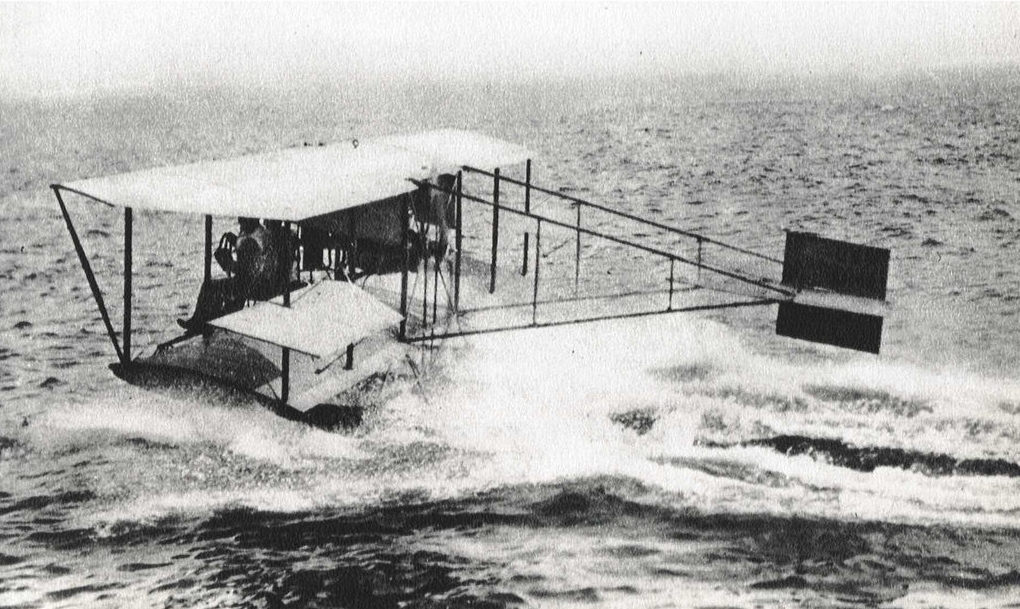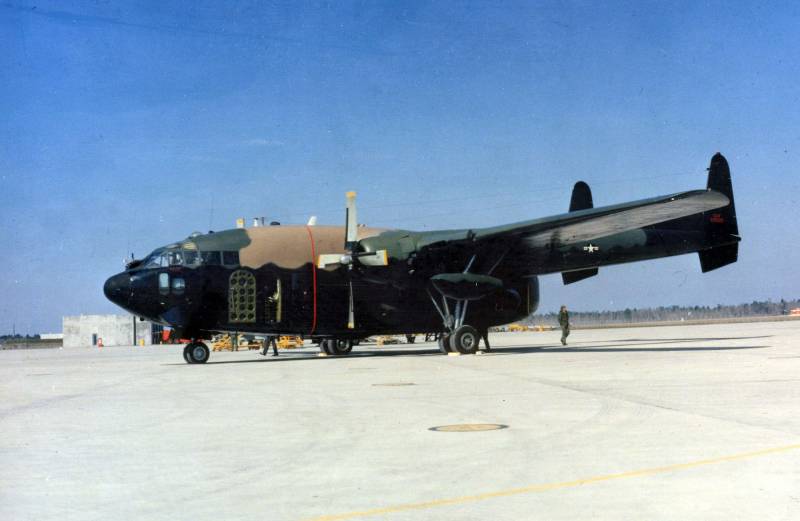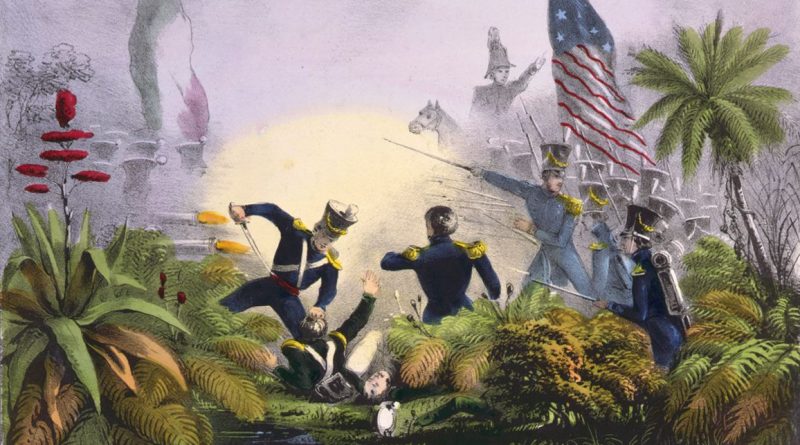May 8 in U.S. military history
1846: (Featured image) In the first major battle of the Mexican War, U.S. Army forces under the command of Gen. (and future president) Zachary Taylor decisively defeat Mexican forces under Gen. Mariano Arista in the Battle of Palo Alto (Texas). The Mexicans will retreat to a seemingly more defensible position at Resaca de la Palma the following day, but Taylor will pursue and beat them badly there too.
1864: Union Army forces under the command of Lt. Gen. Ulysses S. Grant and Confederate forces under Gen. Robert E. Lee clash in the Battle of Spotsylvania Courthouse. The outcome at Spotsylvania Courthouse will be inconclusive and the casualties terribly heavy. In less than two weeks, Grant will again break contact and continue his advance toward Richmond.
1904: U.S. Marines land at Tangier, Morocco to protect the Belgian legation.
1911: U.S. Navy Capt. Washington I. Chambers places an order for two A-1 Triad floatplanes from the Curtiss aircraft company. Thus, May 8 becomes the official birthday of Naval Aviation.

1945: V-E Day: The unconditional surrender of German forces signed by Gen. Alfred Jodl at the “little red schoolhouse” (supreme allied headquarters in Reims, France) the previous day becomes official. Although clashes between the Wehrmacht and the Red Army will continue for another day, Nazi Germany has laid down their arms. After nearly six years of fighting, claiming tens of millions of lives in the largest and bloodiest conflict the world had ever seen, the European Theater of World War II is over.
1970: During an armed reconnaissance mission near Ban Ban, Laos, an AC-119K Stinger gunship begins raining down fire on enemy vehicles with their 20mm cannons and 7.62mm miniguns. Six anti-aircraft vehicles strike back, hammering the orbiting gunship with deadly fire. Air Force pilot, Capt. Alan D. Milacek manages to muscle the nearly crippled plane out of a dive and limps the bird back to Udorn Air Force Base in Thailand.

The crew lands safely, which is an incredible feat considering that 15 feet of the right wing was blown off, including the control surfaces. For their actions, the 10-man crew is awarded the Mackay Trophy for “the most meritorious flight of 1970.”
1972: Following a massive invasion of South Vietnam by the North Vietnamese Army, Pres. Richard M. Nixon announces that he has ordered the mining of North Vietnamese ports to stop the flow of weapons to the communists.
Medal of Honor: On this date in 1942, Lt. John J. Powers tells his fellow dive bombers as they prepare to climb into their planes to attack the Japanese aircraft carrier Shokaku during the Battle of the Coral Sea, “Remember, the folks back home are counting on us. I am going to get a hit if I have to lay it on their flight deck.”
President Franklin D. Roosevelt will tell the nation during one of his fireside chats in September that Powers flew “through a wall of bursting anti-aircraft shells and swarms of enemy planes. He dived almost to the very deck of the enemy carrier, and did not release his bomb until he was sure of a direct hit.”
“He was last seen attempting recovery from his dive at the extremely low altitude of two hundred feet,” said the president, “amid a terrific barrage of shell and bomb fragments, and smoke and flame and debris from the stricken vessel. His own plane was destroyed by the explosion of his own bomb. But he had made good his promise to ‘lay it on the flight deck.’”
SBD Dauntless scout pilot Lt. (junior grade) William E. Hall attacks and destroys three enemy warplanes during the Battle of the Coral Sea and is wounded during the dogfight. The previous day, Hall assisted in the sinking of the Japanese carrier Shoho.
Meanwhile aboard USS Yorktown (CV-5), Lt. Milton E. Ricketts (who graduated alongside Lt. Jones from the U.S. Naval Academy in 1935) is leading a damage control party while Japanese pilots target the aircraft carrier. An enemy bomb falls right next to Ricketts and his men, exploding one deck below them. The blast kills and wounds several of Ricketts’ team and although mortally wounded himself, Ricketts charges a fire fighting hose and works to extinguish the blaze until he perishes.
On this date in 1945, acting squad leader Private First Class Anthony L. Krotiak and his soldiers are engaged in a firefight on Luzon Island’s Balete Pass. When Krotiak spots an enemy grenade thrown into their trench, he knocks his squad mates out of the way, jams the grenade into the ground with the butt of his rifle, then shields them from the blast with his body. Krotiak will die within moments.
When Lance Corporal Miguel Keith‘s outnumbered platoon was engaged in South Vietnam’s Quang Ngai Province during an early morning attack in 1970, the already-wounded Marine charged into heavy fire, raining down fire that downed three and chased off the remaining two enemy soldiers in their failed attempt to rush the American command post. An enemy grenade wounds him again, but he ignores his serious wounds and charges once more at a force of 25 men, killing several more with his machine gun and breaking off the attack. Keith is hit again after his second charge, this time fatally.
